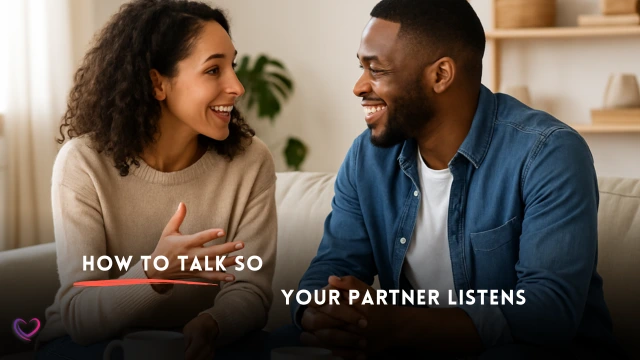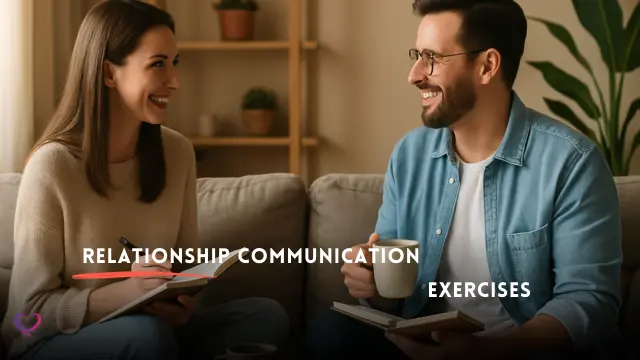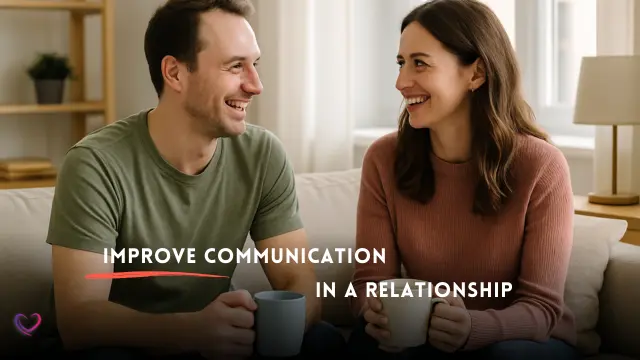How to Talk So Your Partner Listens isn’t about big speeches—it’s about small habits that make your words land and your partner lean in.

How to Talk So Your Partner Listens used to feel like a mystery to me. I’d explain my feelings over and over, yet nothing seemed to land—until I swapped long speeches for a few small habits: naming one clear feeling, keeping my words short, and checking that I’d heard them right. The difference was instant; our home felt kinder and our conversations finally clicked. In this guide, I’ll share the gentle moves that made that shift possible.
Why How to Talk So Your Partner Listens Matters
When we learned to share feelings in clear, bite-size sentences, the daily tension about chores, money, and family melted. Listening felt like teamwork, not a tug-of-war—saving us time, energy, and a lot of headaches.
Quick Warm-Ups: Couple Conversation Starters in Under 3 Minutes
1. “High-Low-Hope” Check-In
Each person shares today’s high point, low point, and one hope in three short sentences.
2. 60-Second Eye Contact
Phones down, eyes locked, breathe together for one minute.
3. Gratitude Hand-Off
Hand your partner a coffee mug or key and say one thing you appreciate; they do it back.
The first time we tried eye contact, I giggled from nerves—then felt strangely calm and ready to listen.
Personal Highlight
Daily Micro-Drills: Active Listening Techniques for Couples
4. Mirror & Clarify
After your partner speaks, repeat what you heard in your own words. End with, “Did I get that right?”
5. Two-Sentence Rule
Limit yourself to two sentences before pausing—keeps rambling at bay.
6. Body-Scan Pause
Notice tight shoulders or clenched jaw; name the feeling (“I’m tense”) before you talk.
Playful Games: Emotional Connection Activities
7. Song Swap
Trade a track that captures your mood; explain in one line.
8. Jenga Truth Tower
Prompts (“a hidden fear”) on blocks; pull and share.
9. Yes-And Storytelling
Build a silly story together, using “yes, and…” to keep momentum positive.
Deep-Dive Sessions: Relationship Dialogue Practices
10. Monthly Retro (45 min)
List wins, analyze one conflict, pick a drill for next month.
11. Life Timeline Map (30 min)
Draw highs and lows of each decade—sparks empathy.
12. Dream Budget Talk (25 min)
Pair money with shared goals, not blame.
Crisis-Mode Tools: Conflict Resolution Conversations
13. Safe-Word Pause
Say “pineapple,” both breathe 60 seconds, then state one need.
14. Write-Then-Read
Jot thoughts for 5 minutes, read aloud; slows knee-jerk replies.
15. 30-Second Gratitude Flip
Rapid-fire three things you still value about each other to break the blame loop.
FAQ's
1. How often should we practice these drills?
- Start with one quick warm-up daily and one weekly workout.
- Add more when they feel natural.
2. My partner thinks exercises are silly—what now?
- Let them choose the shortest drill.
- Keep it under ten minutes to prove it’s painless.
- Celebrate any tiny win to encourage buy-in.
3. Can these tips help long-distance couples?
- Yes—use video calls for Mirror & Clarify.
- Send voice notes for the Two-Sentence Rule.
- Try Song Swap playlists to share mood.
4. What if we still end up yelling?
- Use the Safe-Word Pause.
- Take a physical break (walk, drink water).
- Resume only after body-scan check-ins.
5. How do I know it’s working?
- You resolve arguments faster.
- You catch yourself saying, “I feel…” instead of “You always…”
- There’s more laughter and inside jokes.
Conclusion
Mastering How to Talk So Your Partner Listens isn’t about perfect wording—it’s about tiny, repeatable habits: lead with a feeling, pause after two sentences, mirror what you heard, pick calm moments, open your body language, stay curious, call a pause when needed, time hot topics, end with thanks, and celebrate weekly wins. Choose one habit tonight—maybe the two-sentence rule—give it a week, and watch real listening take root.



